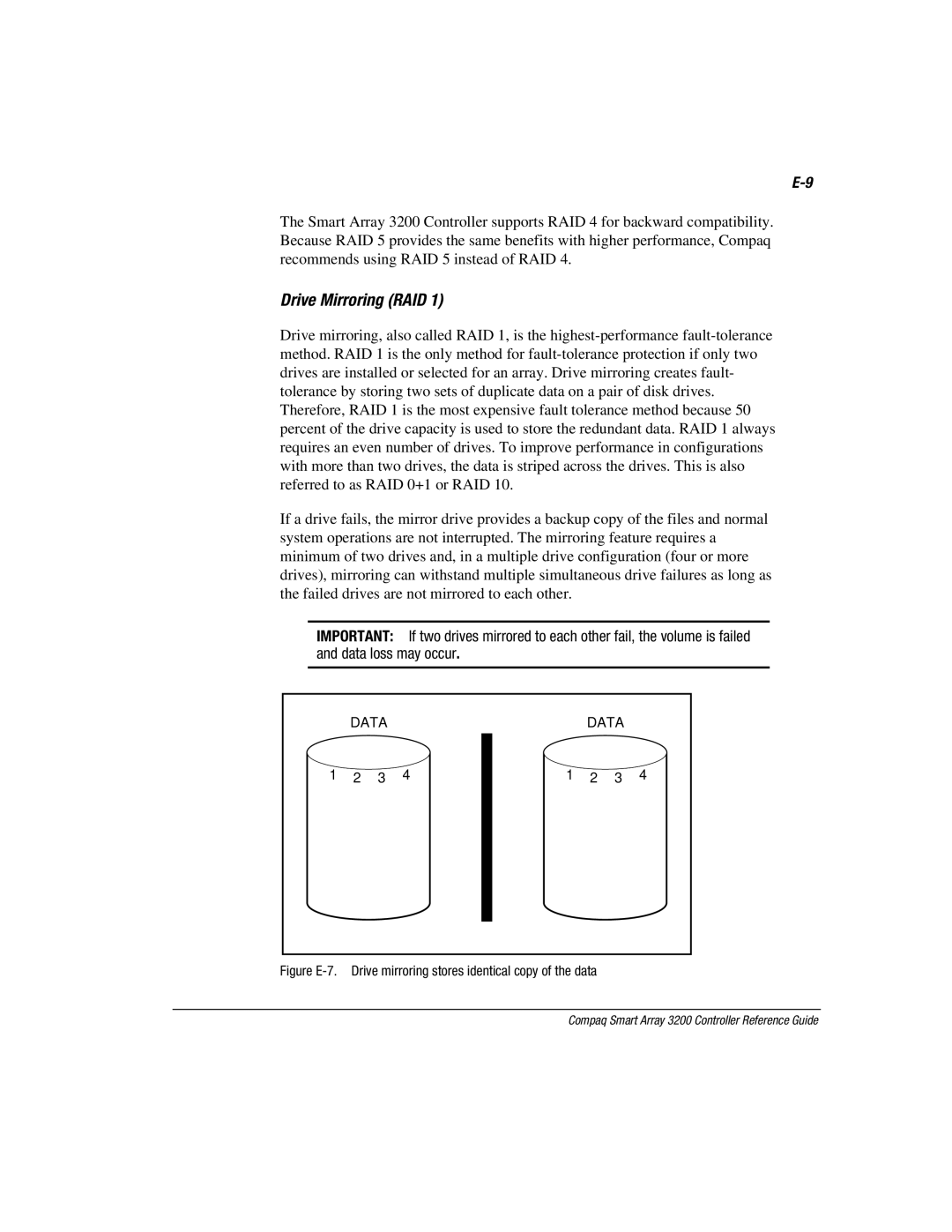
The Smart Array 3200 Controller supports RAID 4 for backward compatibility. Because RAID 5 provides the same benefits with higher performance, Compaq recommends using RAID 5 instead of RAID 4.
Drive Mirroring (RAID 1)
Drive mirroring, also called RAID 1, is the
If a drive fails, the mirror drive provides a backup copy of the files and normal system operations are not interrupted. The mirroring feature requires a minimum of two drives and, in a multiple drive configuration (four or more drives), mirroring can withstand multiple simultaneous drive failures as long as the failed drives are not mirrored to each other.
IMPORTANT: If two drives mirrored to each other fail, the volume is failed and data loss may occur.
| DATA |
|
| DATA |
| ||
1 | 2 | 3 | 4 | 1 | 2 | 3 | 4 |
